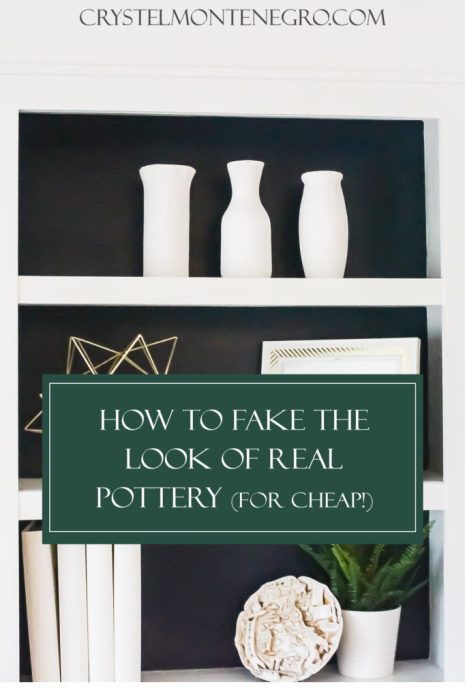As a blogger you have to learn a lot of new skills. Not only do you have to be the expert in whatever it is you’re blogging about, but you have to learn photography, web design, SEO, Marketing, people skills, writing, and a whole host of other things you wouldn’t really think about. Knowing this, my friend walked in one day while this DIY project was drying and said “oh, so you’re an expert at pottery now too?!”
That made me feel REAL good. It sure looks like it, doesn’t it? And the best part about it was that there was no clay or kiln required. Or even pottery skills! So let’s get started.
Materials:
- Vases (mine were glass but most any material should work!)
- Sand paper
- Plaster of Paris
- Water
- Water based Polyurethane or Polycrylic in a matte finish
- Paint brush ( I used this kind)

Here’s what I started out with. I went to my local thrift store and found some old vases that had a shape I liked. I found several different shapes, matched the height as well as I could, and brought them home. I began by roughing up the glass with the sandpaper to help the plaster stick just a little bit better.
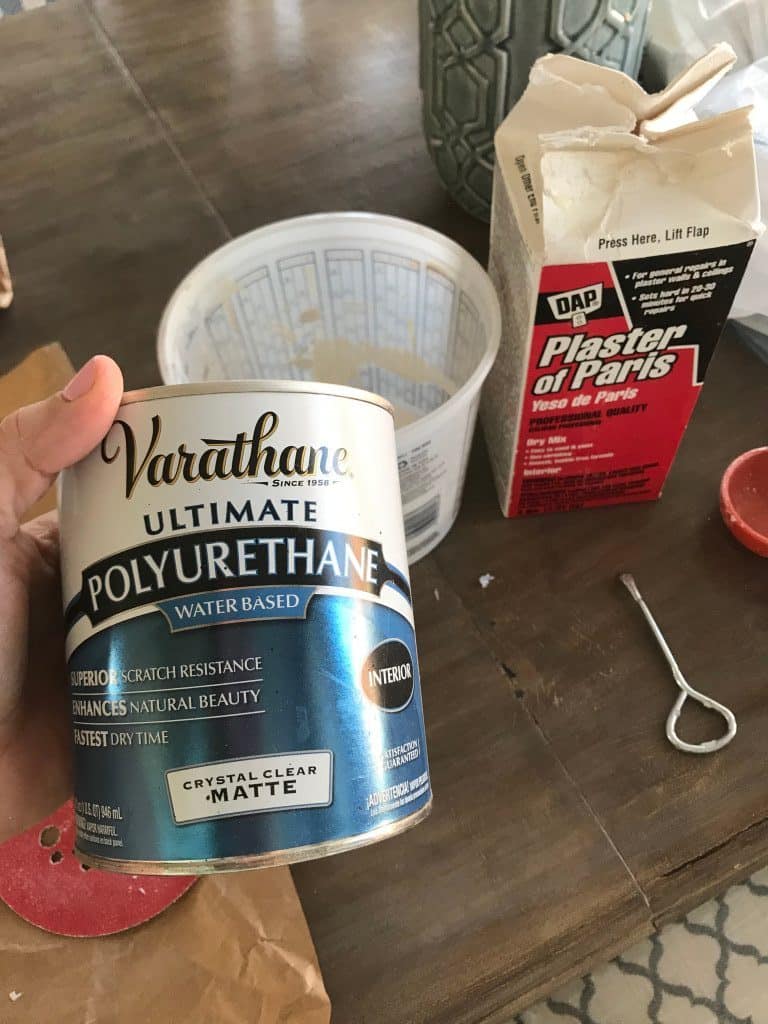
I tried several different methods for application. First I mixed the Plaster of Paris with water, and I added a little more water than it suggests on the box because I didn’t want it to be so thick when I was applying it, and I also didn’t want it to dry out on me too fast. Once you’ve mixed your plaster it dries very quickly so you’ve got to work fast.
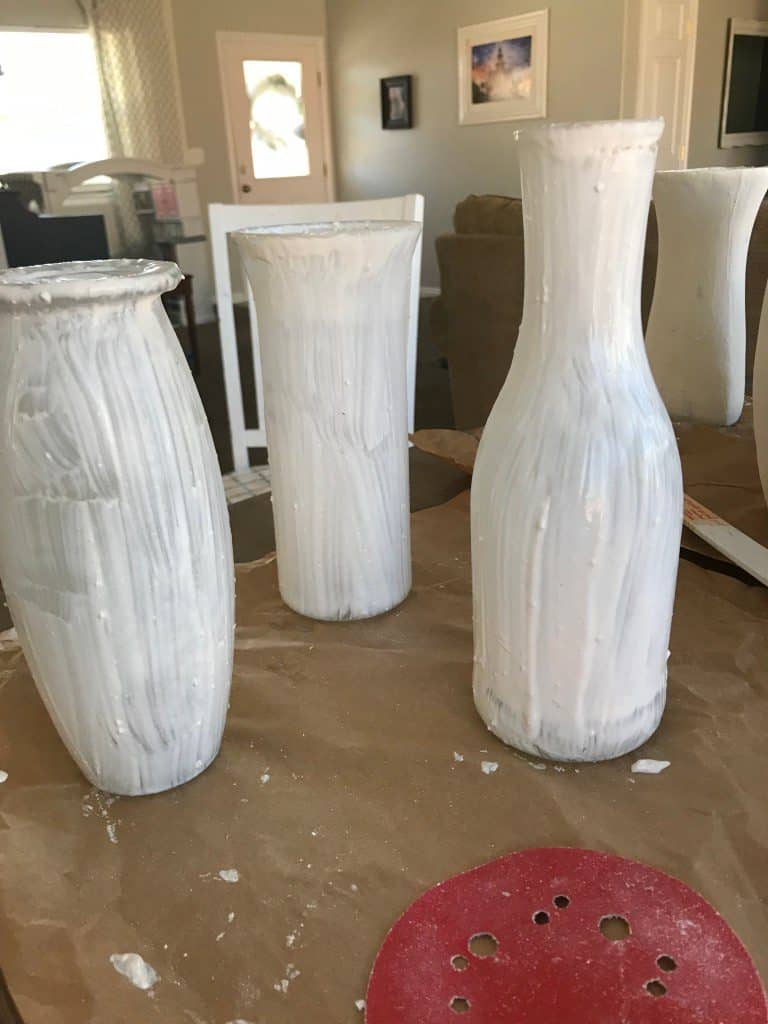
I then used a natural bristle brush (aka chip brush) to apply it onto the top and exterior of my vases. This layer went on quite thin, and it took a while to dry enough to put another layer on there, so I wanted to experiment to see if I could cut down on some of the steps.
For the next layer instead of water I tried adding just the Polyurethane to mix with the plaster of Paris. This had a nice consistency, but when it dried it looked like this:
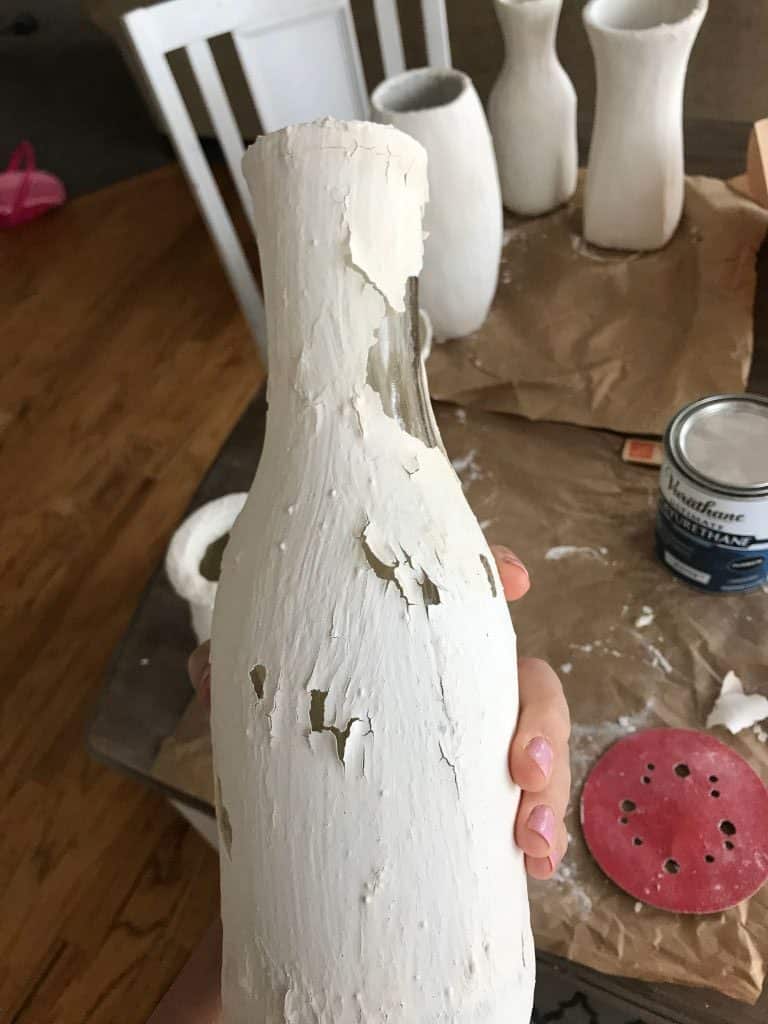
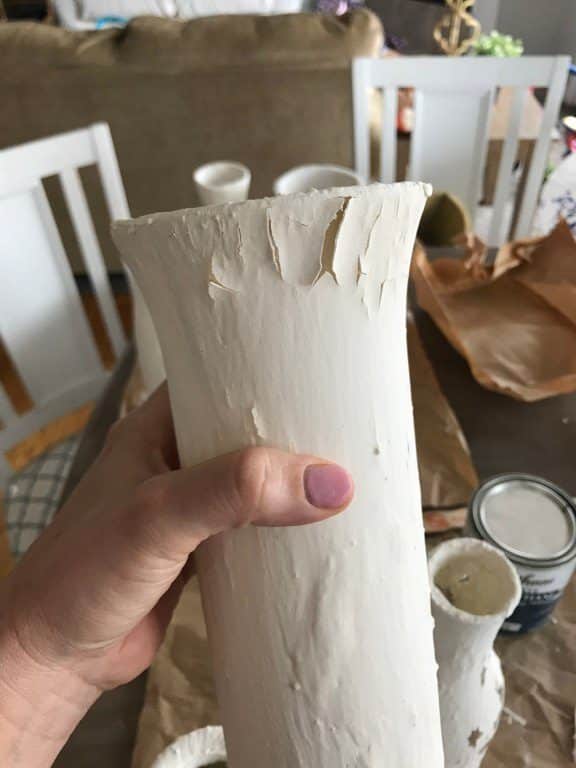
Not gonna fly! It cracked and peeled off the glass. I sanded it down where it peeled up and decided to stick with just the water and plaster of paris. This time I added just a little bit less water to my plaster to make it a little thicker and waited for it to dry. I put several coats on it until it was as thick as I wanted it.
Note: It’s best if the plaster of paris and water is mixed very well and applied as evenly as possible so there’s no lumps. The lumps made it much harder to sand it down evenly when I was done.
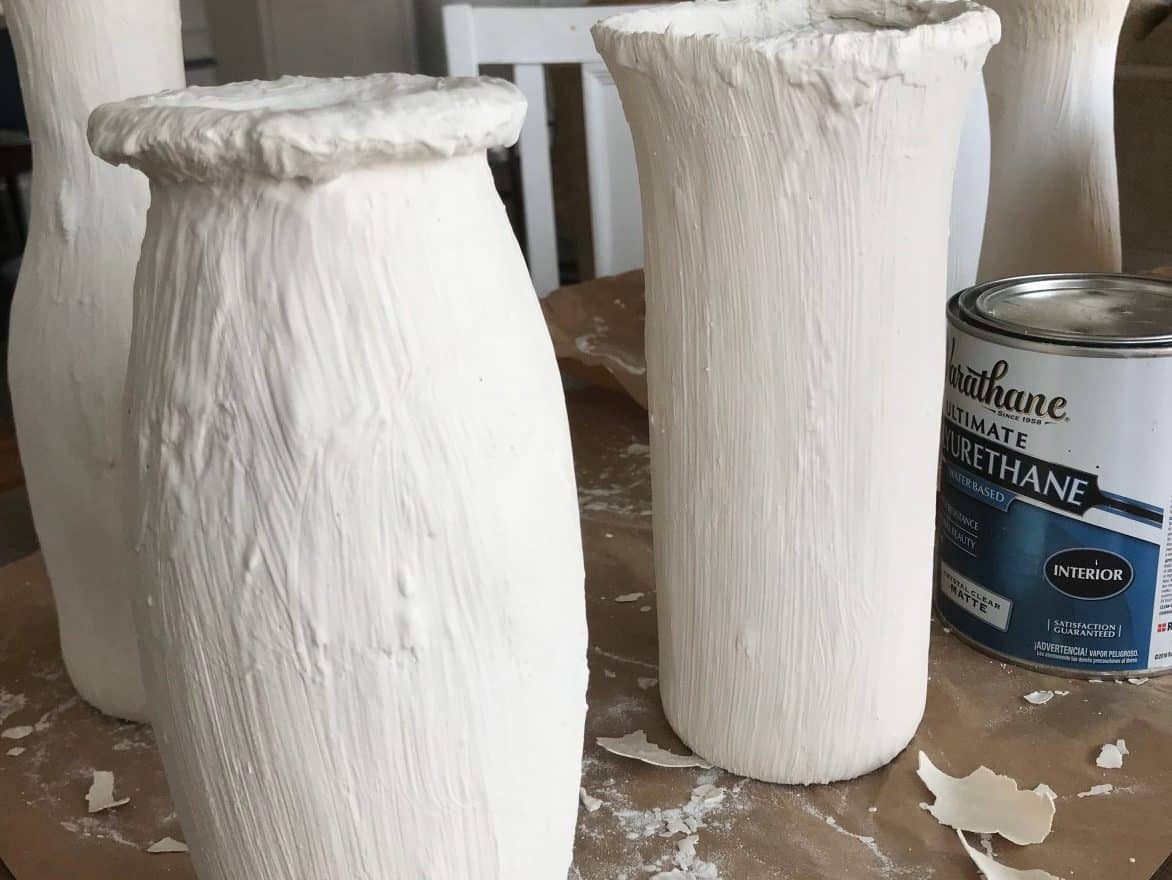
You’ll want to apply multiple relatively thin layers until you get sufficient coverage. I found that it was easier to apply a layer or two, wait for it to dry, then sand it down with 150 grit sandpaper. Then I reapplied another several layers of plaster until I had the desired thickness. Once I was finished with the plaster, I did one final smooth-down with 150 grit sandpaper, then again with 220 grit.
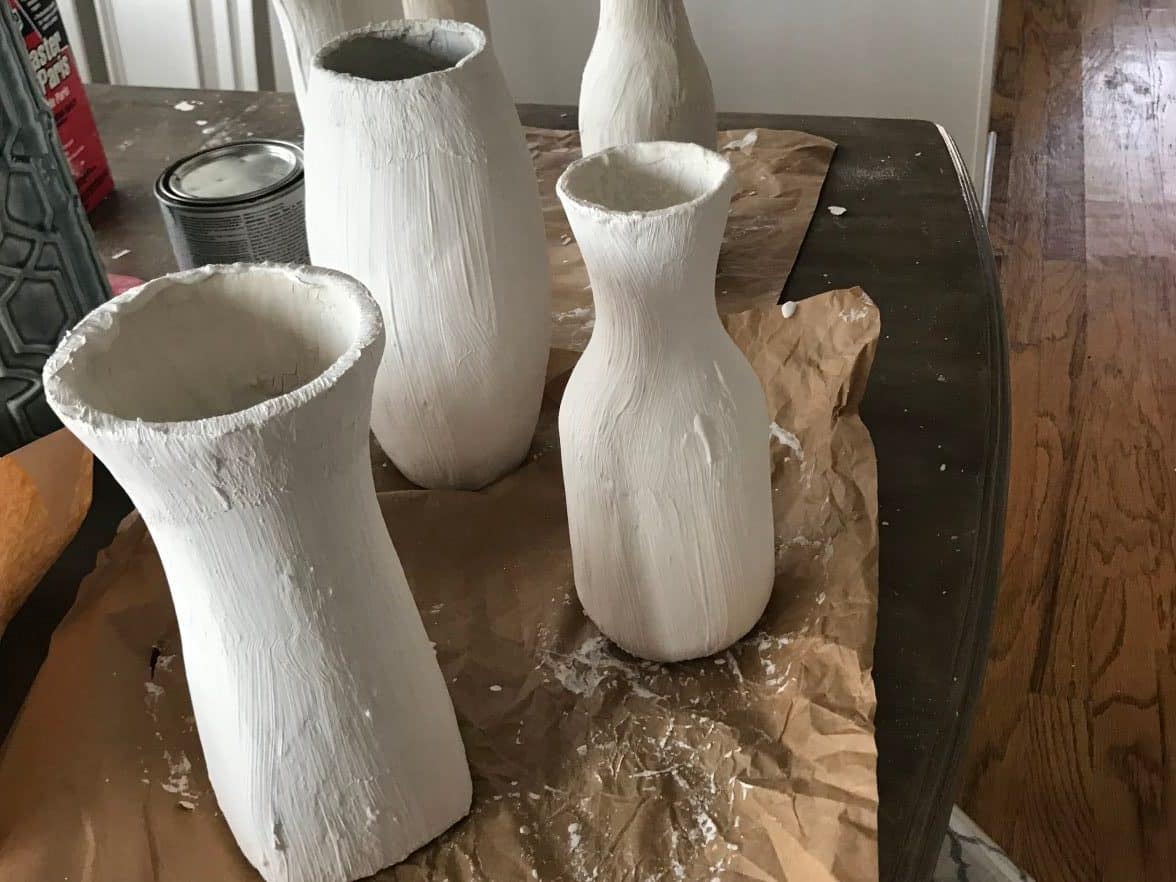
At this point your vases will be very dusty. After blowing off the dust as well as possible, I layered on a coat of the polyurethane to protect the vases from chipping.
Oooh la la! You’ve got yourself some DIY ceramics!
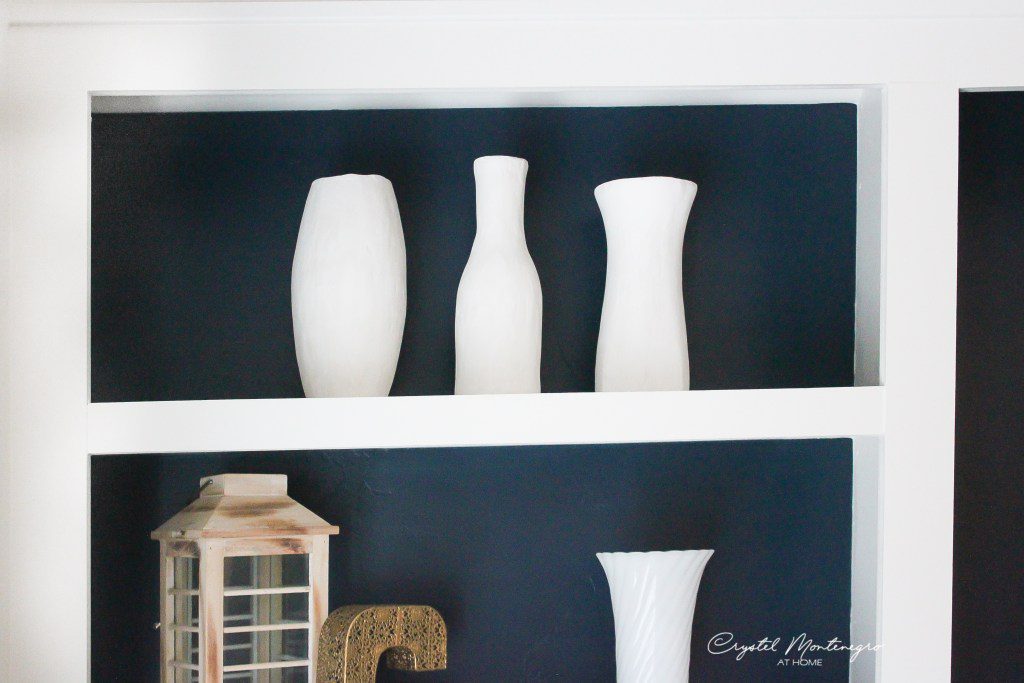
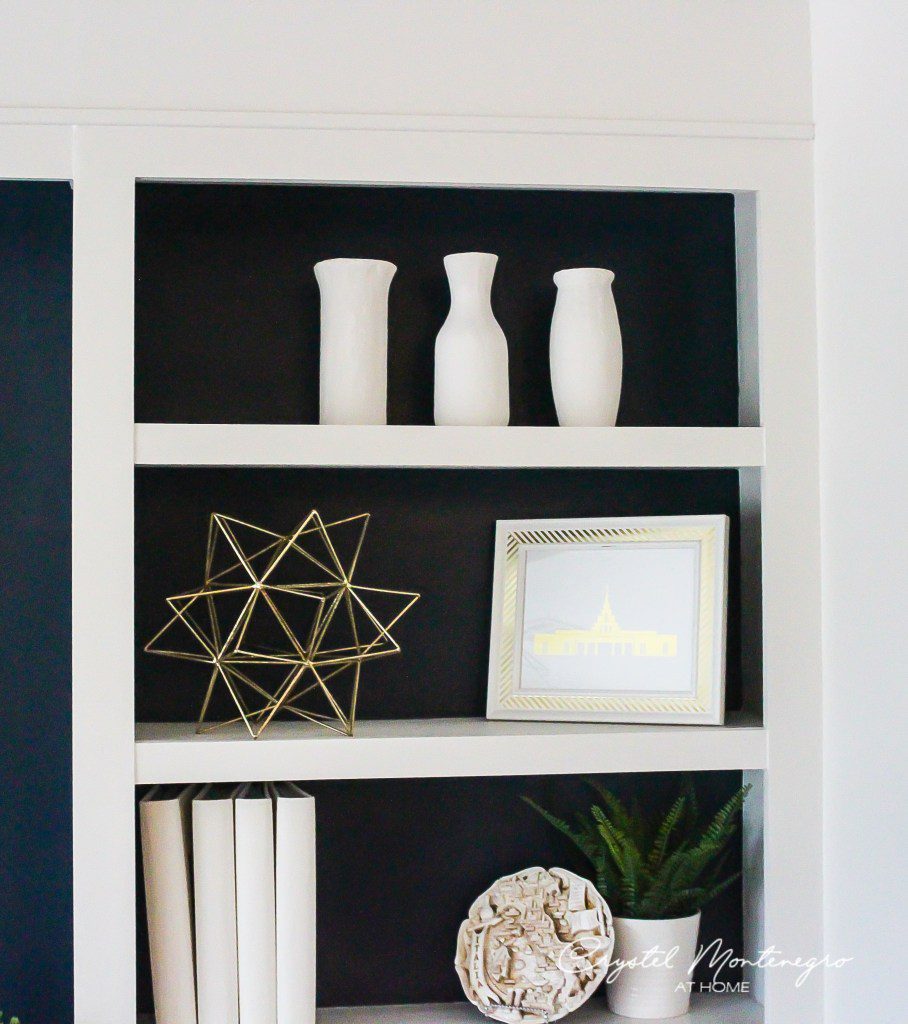
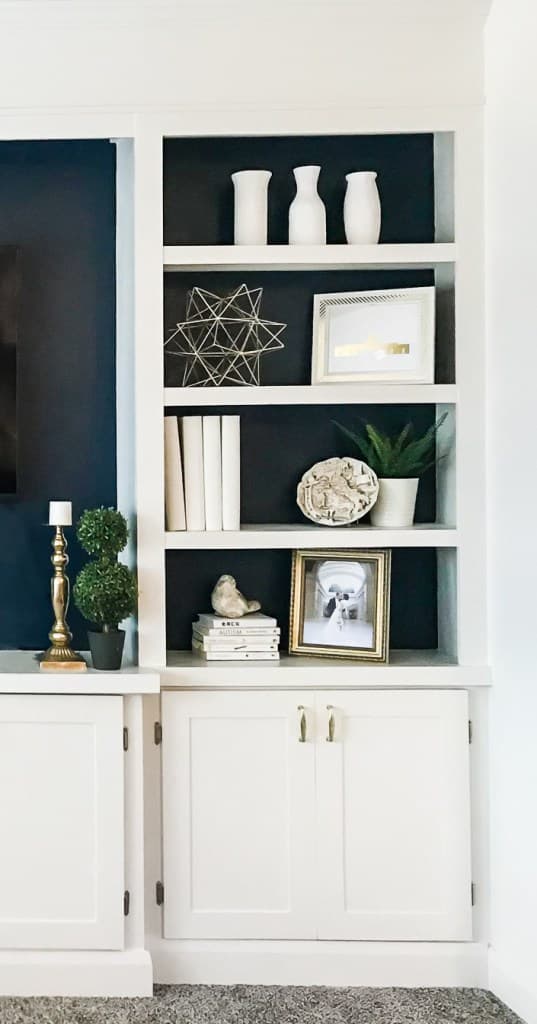
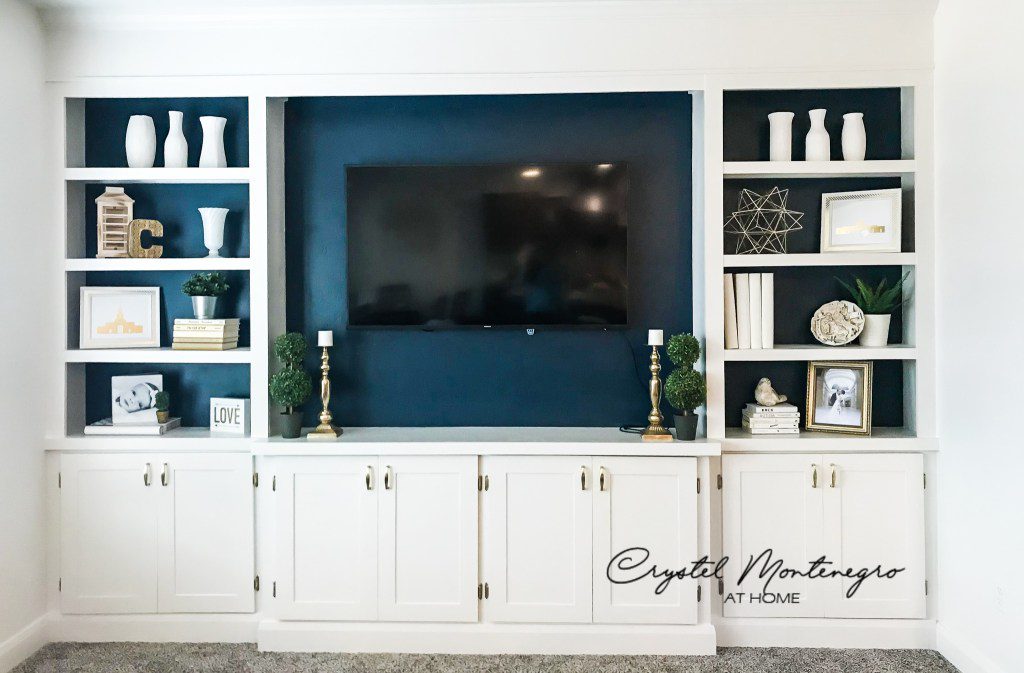
I thought that the white against the contrast of the blue would look so nice. And it does, don’t you think?
By the way, I designed and built these built-ins all by my little old self.
You might also be interested in how I used plaster of paris to give my Terra cotta pots a Tuscan make-over. Check it out!
Thank you so much for tuning in! Until next time.
XOXO,
Crystel
